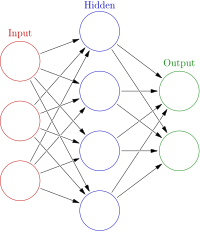
Photo from wikipedia
Sliding mode control (SMC) is investigated for nonlinear networked stochastic switching systems subject to semi-Markov parameters, in which the model is formulated based on the Takagi-Sugeno (T-S) fuzzy strategy. The… Click to show full abstract
Sliding mode control (SMC) is investigated for nonlinear networked stochastic switching systems subject to semi-Markov parameters, in which the model is formulated based on the Takagi-Sugeno (T-S) fuzzy strategy. The occurrences of actuator failures and deception attacks are considered within the framework of networked semi-Markov switching systems. A common sliding surface is designed to prevent instability caused by repeated jumps. Based on the generally uncertain transition rate, sufficient conditions for stochastic stability of the corresponding system are presented. Moreover, in the consideration of actuator failures and deception attacks, the feasibility of the SMC law drives the states toward the specified sliding region. The presented single link robot arm model demonstrates the effectiveness of the theoretical findings.
Journal Title: IEEE Transactions on Circuits and Systems II: Express Briefs
Year Published: 2022
Link to full text (if available)
Share on Social Media: Sign Up to like & get
recommendations!